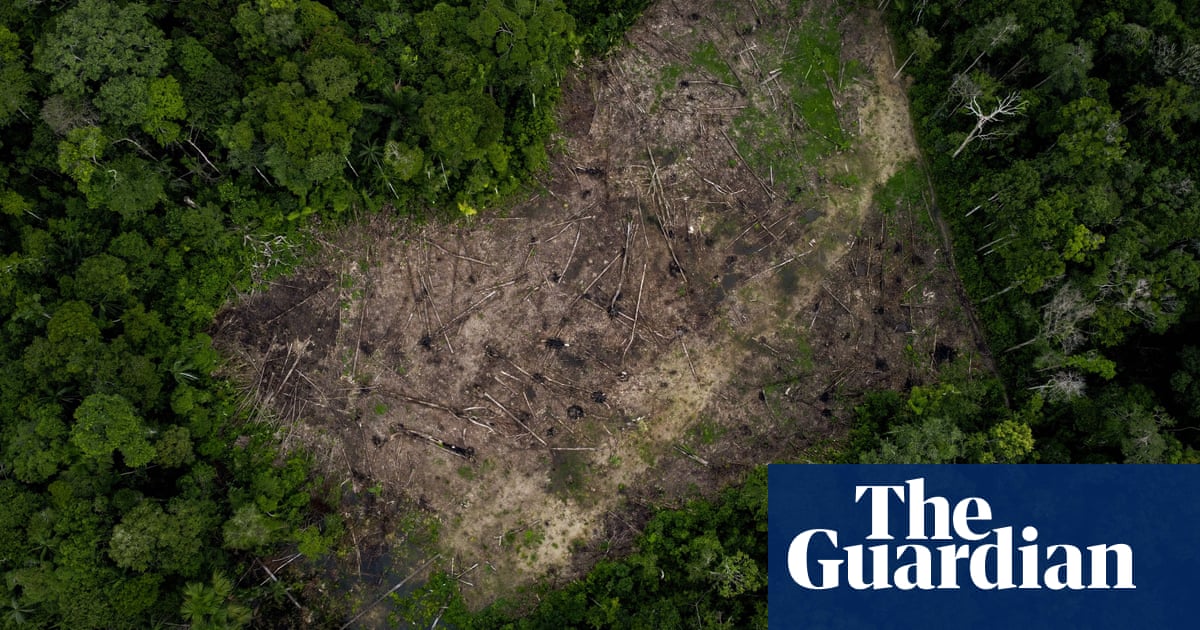
Deforestation in the Colombian Amazon is surging and could be at a historic peak as armed groups use the rainforest as a bargaining chip in peace negotiations with the government.
Preliminary data shows that deforestation in the region was 40% higher in the first three months of this year than in 2023 as armed groups tightened their control over the rainforest, said Susana Muhamad, the country’s environment minister.
“We are seeing an upward trend that is quite worrying and this has two main reasons,” Muhamad told a press conference in Bogotá. “The first is the very significant coercion [of local people] by armed groups in the area, and the second is obviously the favourable conditions [for fires] that have to do with the El Niño phenomenon.”
Colombia has been turning the tide on runaway deforestation in recent years after a 2016 peace accord with the country’s largest guerrilla group left forests unprotected.
Without the Revolutionary Armed Forces of Colombia (Farc) policing the jungle, a record 219,973 hectares (544,000 acres) were lost in 2017.
Gustavo Petro’s government – the first leftwing administration in the country’s history – has rapidly reversed the trend by negotiating with the armed rebels who have filled the Farc’s power vacuum.
Deforestation across Colombia plummeted 29% from 2021 to 2022 to reach the lowest level since 2013, and preliminary data suggests it dropped another 25%-35% in 2023, the environment ministry said.
That trend has come to an end, however.
The unprecedented drop in deforestation was largely due to the order of the Estado Mayor Central (EMC), a group of dissident rebels who dominate vast swathes of Colombia’s forests in the south of the country. The EMC banned forest clearing in 2022 to get a seat at the negotiating table with Petro’s government.
But as those talks became strained last year, the armed rebels revoked the ban. Rather than protecting the Amazon the EMC is now allowing land grabbers to lay waste to the forests in order to show the government who controls the region and extract more favourable negotiating terms.
“The environment has become a bargaining chip,” said Angelica Rojas, a liaison officer for the Guaviare department at the Foundation for Conservation and Sustainable Development (FCDS), a Colombian environmental thinktank.
Deforestation in the Colombian Amazon was 41% higher in the last three months of 2023 than it was the previous year, reaching 18,400 hectares. The concerning trend has continued this year, with 40% higher forest loss in the first three months of 2024, preliminary government figures show.
“We expected that deforestation would rise, but not [at] the levels that it is rising,” Muhamad said.
The hotspots were the Meta, Caquetá and Guaviare departments – EMC strongholds and key battlegrounds in Colombia’s fight to save the rainforest.
“It’s supremely worrying. People forget that it is not a count of this year’s deforestation in isolation,” said Rodrigo Botero, the director of FCDS. “The damage is cumulative and in the last six years we have now lost more than half a million hectares of forest. We are at a point of no return.”
Particularly alarming was the encroachment of cattle farming and coca production on some of the most remote, biodiverse and delicate ecosystems in the world, Botero added. “They are reaching zones such as the Guiana Shield that are infinitely more important in terms of biodiversity and which will take centuries to recover.”
As well as revoking its ban on deforestation, the EMC were playing a “psychological game” with local communities to control them, Muhamad said.
In recent months armed rebels have displaced local people, killed environmental activists and expelled government officials from the region.
The EMC’s tightening grip has forced the government to halt projects intended to protect the forest such as ecotourism initiatives and a payment scheme for farmers who preserve the forest.
“Nature is being put in the middle of the conflict,” Muhamad said.
The El Niño weather phenomenon, which typically causes less rainfall in the Amazon, was also facilitating fires in the region, the minister said. South America has experienced extreme droughts and record temperatures this year.
Read More: World News | Entertainment News | Celeb News
Guardian









